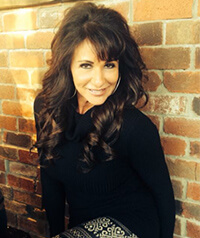The fade is one of the most requested haircuts in the world — and with good reason. It’s clean, versatile, modern, and effortlessly cool. But did you know this iconic style has a rich history that spans decades of culture, fashion, and self-expression?
At The Refined Man, we specialize in fades of all kinds — low, mid, high, skin, burst, drop — and everything in between. Here’s a closer look at how the fade evolved from a military cut to a modern barbershop staple.
The Military Origins (1940s–1950s)
The fade’s earliest roots can be traced back to the military. During World War II and the Korean War, American soldiers were required to keep their hair short, neat, and uniform — both for hygiene and discipline.
These early versions of the fade weren’t for fashion — they were practical. High-and-tight cuts kept hair off the ears and collar, while emphasizing cleanliness and a professional appearance.
The Rise of Urban Influence (1980s–1990s)
In the 1980s, the fade exploded in popularity in Black and Latino communities, especially in major cities like New York, Los Angeles, and Chicago. No longer just a military staple, the fade became a canvas for individual style and self-expression.
Barbers began incorporating:
-
Flat tops
-
Designs and patterns etched into fades
-
Temple fades (aka Brooklyn fades)
-
Hi-top fades popularized by hip hop artists like Big Daddy Kane and Kid ‘n Play
The fade had officially crossed into culture — and it was loud, proud, and fresh.
The Mainstream Moment (2000s–Today)
As trends evolved, the fade began showing up in all corners of culture — from athletes and CEOs to actors and artists. It adapted easily to:
-
Business cuts (low fade with a side part)
-
Edgy looks (skin fades with textured tops)
-
Classic styles (pompadours, comb-overs, quiffs)
What made the fade timeless was its versatility — it could be paired with almost any top style and customized for different face shapes and hair types.
Today, it’s a staple in almost every barbershop, from Centralia to cities around the world.
So, What Makes a Great Fade?
It’s all in the blend.
A proper fade requires skill, precision, and an understanding of head shape, hair growth patterns, and symmetry. At The Refined Man, our barbers take the time to tailor each fade to your look — so it’s smooth, even, and sharp from every angle.
Types of Fades We Offer at The Refined Man:
-
Low Fade – Subtle and clean; ideal for professional settings
-
Mid Fade – Balanced and stylish; works with almost any haircut
-
High Fade – Bold and dramatic; great for contrast and edge
-
Skin Fade – Tapers to the skin for a fresh, modern finish
-
Drop Fade – Follows the curve of the head for a sculpted look
-
Burst Fade – Fades around the ear and temple, often with a mohawk or textured top
A Cut Above — Then and Now
The fade has come a long way — from the battlefields to barbershops to boardrooms. And while the style may evolve, one thing stays the same: a great fade never goes out of style.
At The Refined Man, we know how to bring out the best version of every client — with precision fades, expert technique, and top-tier service.
Book your appointment today and get a cut that’s not just trendy — it’s timeless.
]]>
